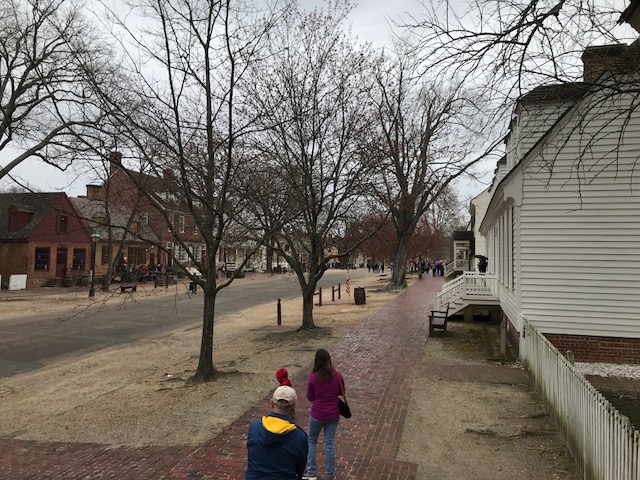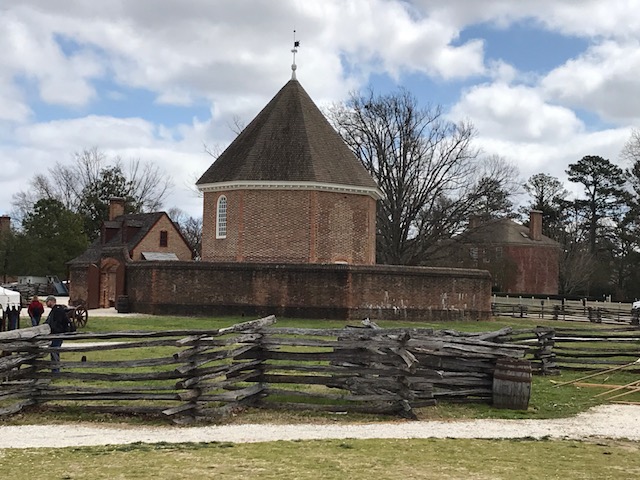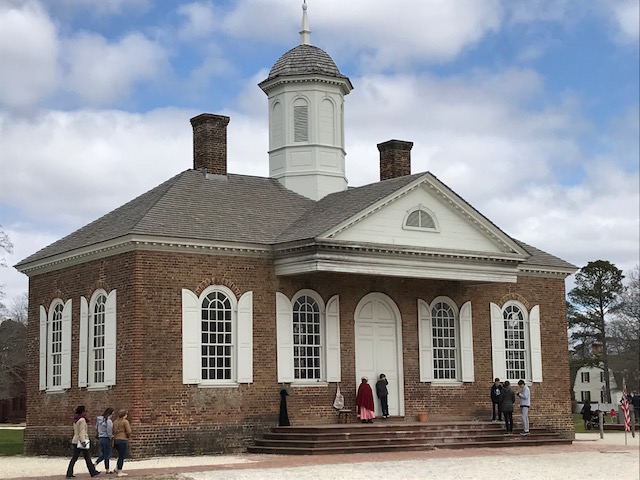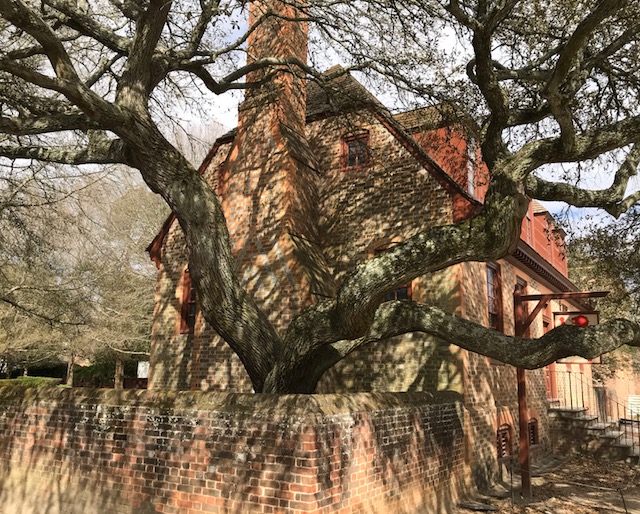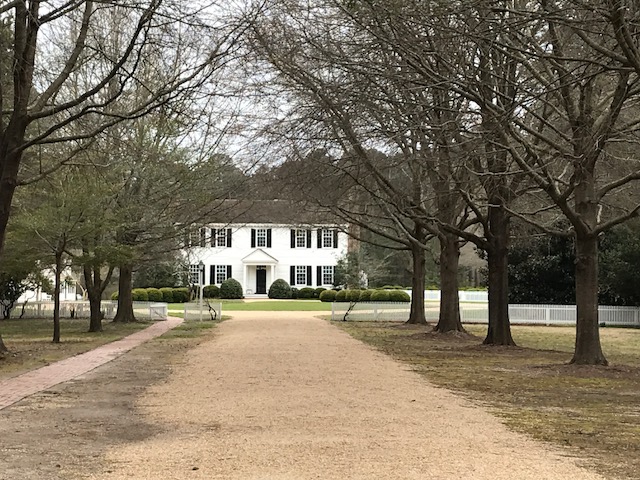On our February road trip through the southeastern states, we met up with a lot of friends and family. We pre-planned, or made last minute plans, to connect with folks that either lived in the areas we visited, or they were visiting the same areas in the south where we were. Our two intended sightseeing destinations were Charleston, South Carolina and St. Augustine, Florida.

We stayed in a beautiful carriage house in the historic district of Charleston, South Carolina. It rained the first day we were there, but the inn provided umbrellas so we went on our merry way, walking around the city, and to the Charleston Museum which was very interesting.

We toured a WWII aircraft carrier (the Yorktown) in Charleston which we found intriguing and worthwhile.

We went on a horse-drawn carriage ride (on a nice, sunny day).

We walked along Rainbow Row (named for a series of thirteen colorful historic row houses in Charleston), and ate some great seafood.
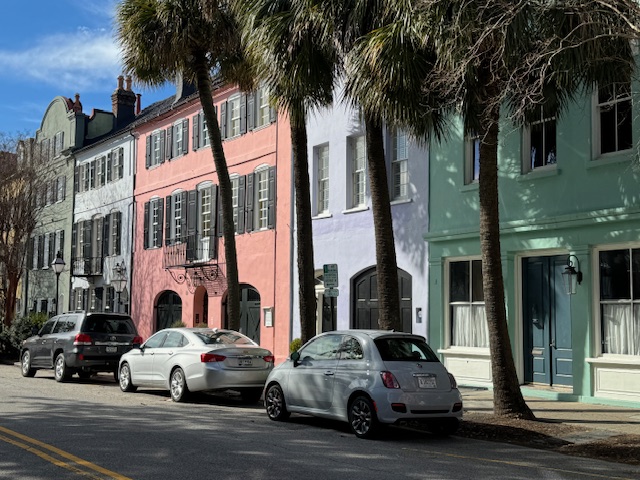
Charleston is nicknamed the holy city because of its number of church spires that dot its skyline.
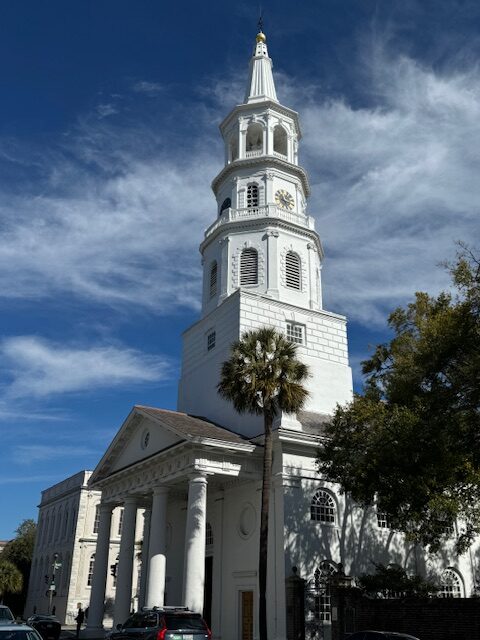
St. Michael’s is one of the churches with a steeple, built in the 1750’s. It is listed on the National Register of Historic Places. George Washington worshipped there one time, as did Robert E. Lee. It continues to have an active congregation today.

It’s a stunning white church that stands out. It is gorgeous! During the revolutionary war, the steeple was painted black for disguise. For more of its colorful history click here: St. Michael’s Church.
A friend recommended I read the book Celia Garth prior to our visit to Charleston. It is a historical fiction novel by Gwen Bristow written in 1959. The narrative takes place in Charleston during the revolutionary war. The author provided me some orientation to the town, and a lot of its history. The story was fun to envision as we walked along the cobblestone streets.

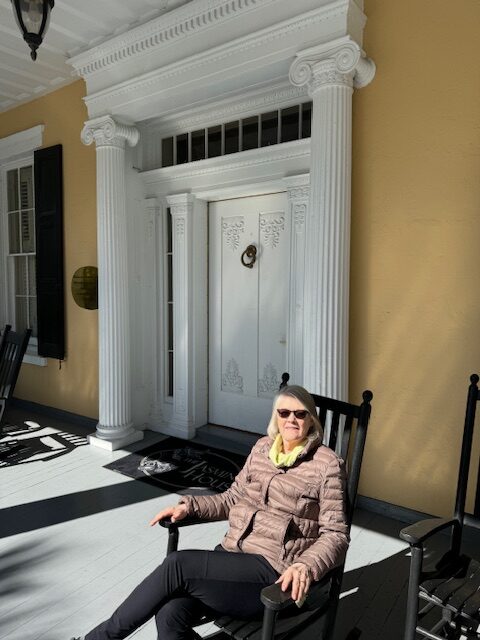
Charleston is s charming city.
St. Augustine, on the northeast coast of Florida, was an exciting place to visit too. It is the oldest city in the U.S., and is known for its Spanish colonial architecture. We enjoyed walking around this city, which is our preferred mode of transportation. The beautiful buildings and quaint shops and old city gate were all fun to see.
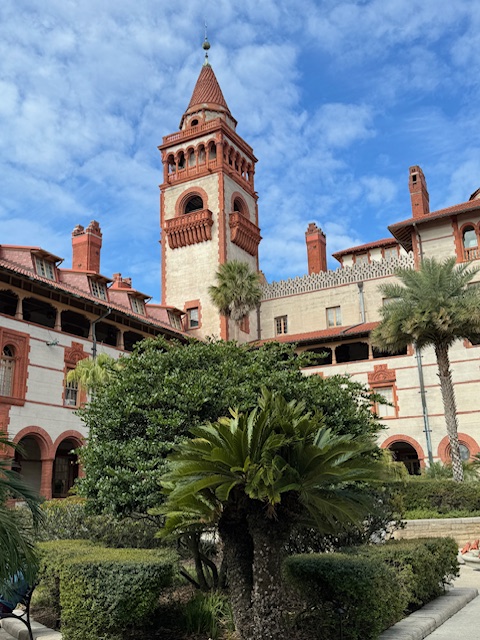

We toured the Castillo de San Marcos fort, a 17th-century Spanish stone fortress.
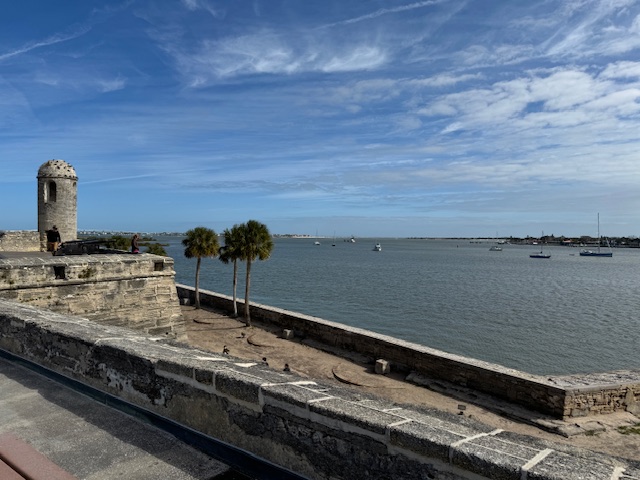
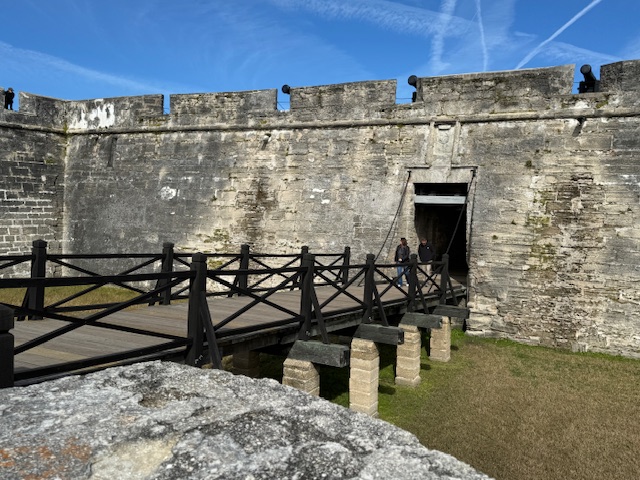
We climbed up 219 steps of the historic 1874 St. Augustine Lighthouse.
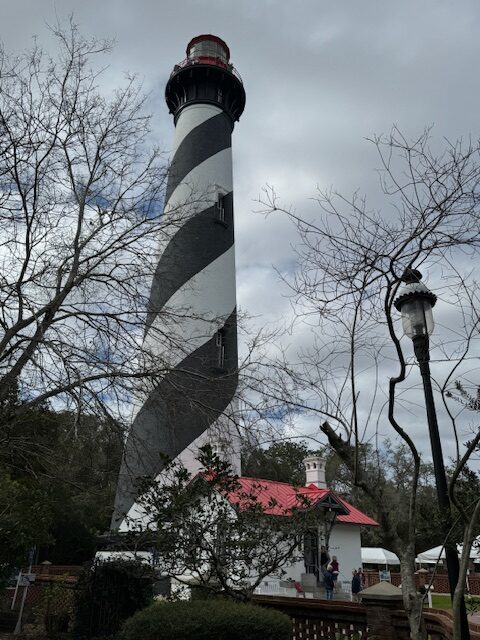
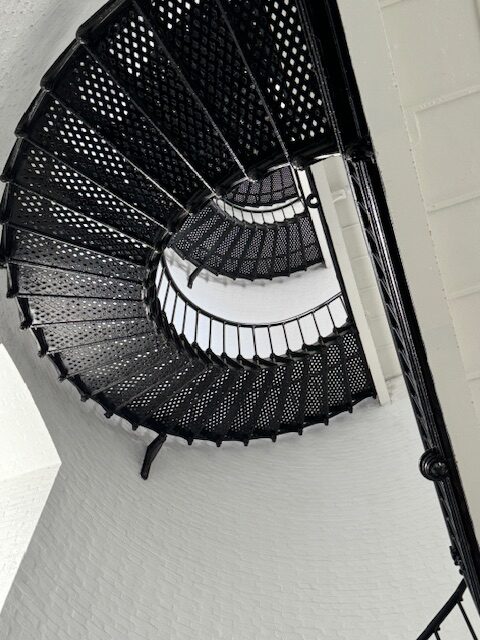

And we ate more great seafood.

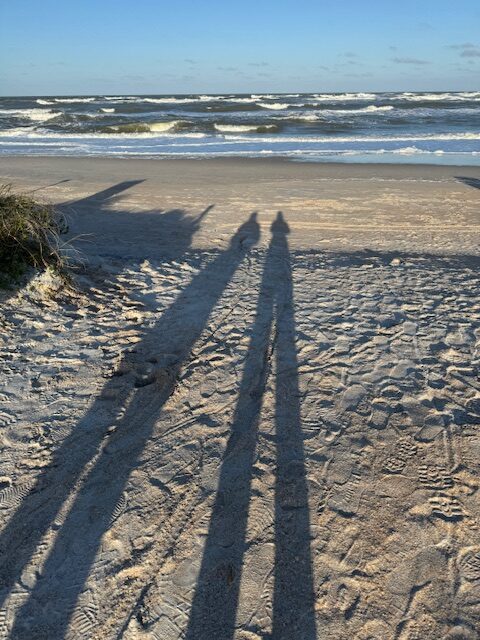
Although I had not read a book about St. Augustine before our trip (it was referred to several times in Celia Garth), we throughly enjoyed our visit to the oldest city in the United States.

I liked this fountain. The masks that decorate this fountain was a gift to the City of St. Augustine (in 2005) by its sister city in Spain, the City of Avilés, birthplace of Pedro Menéndez, founder of St. Augustine in 1565.
